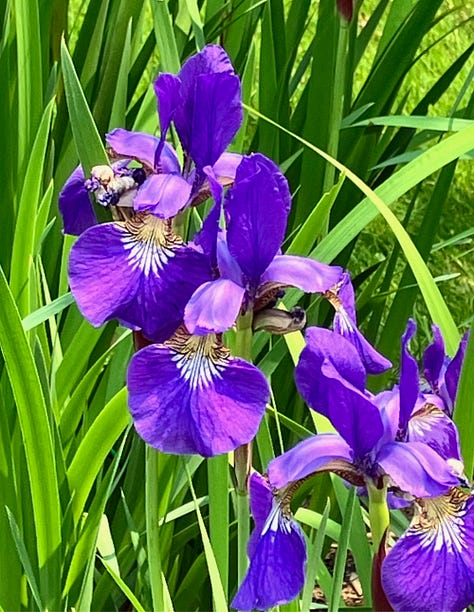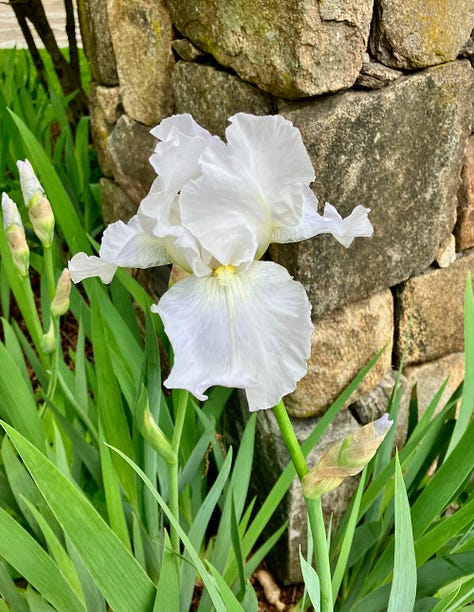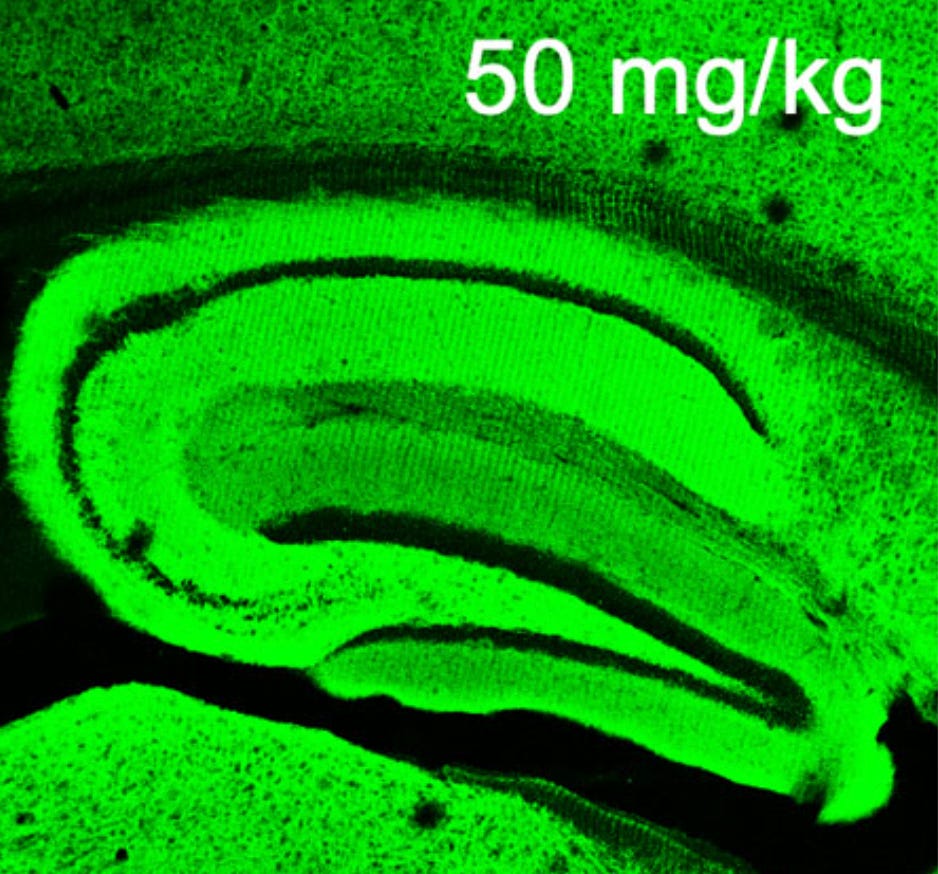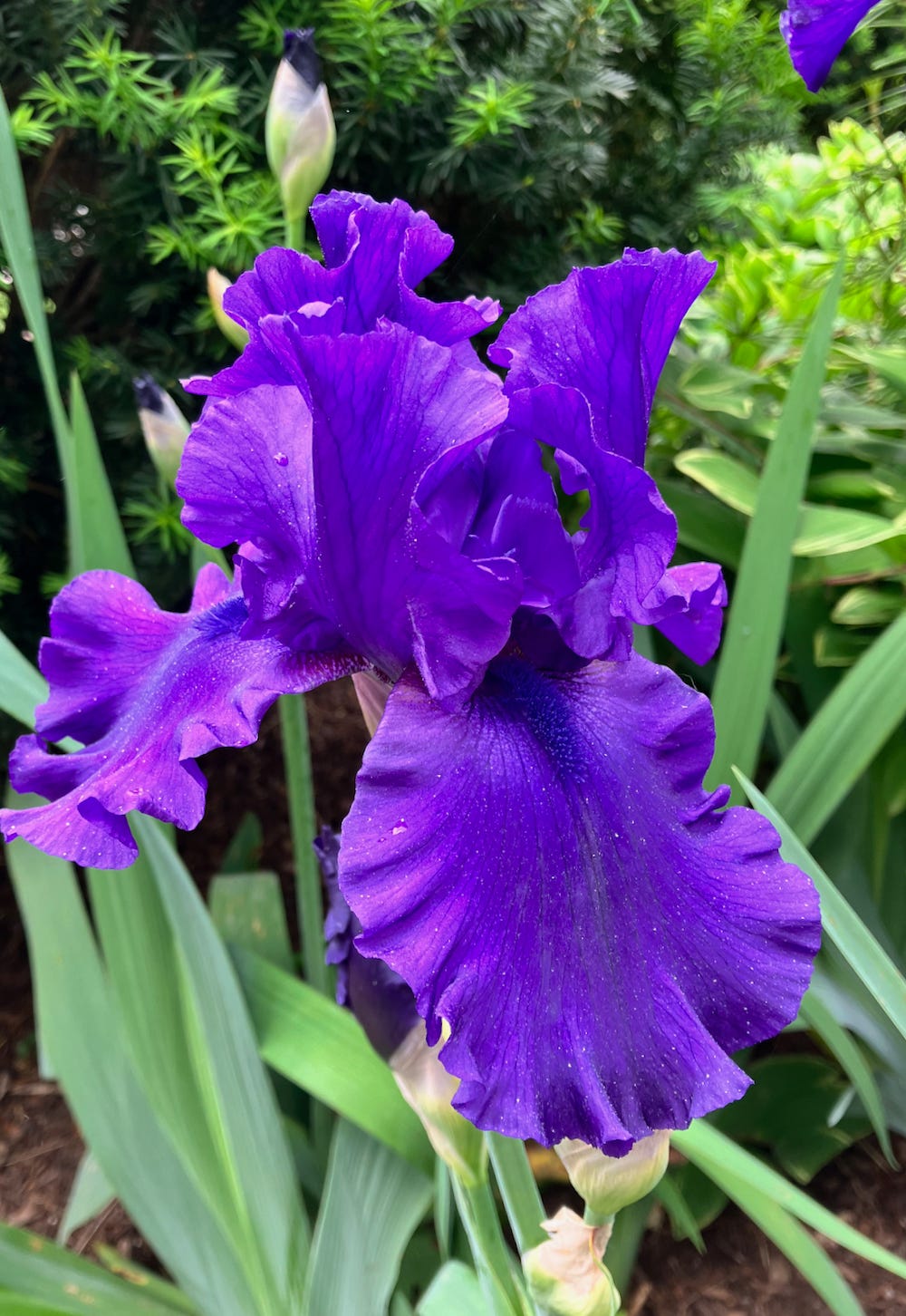How an Alzheimer's smart drug was designed from foods in your fridge
Novel drugs inspired by "the wisdom" of plant evolution should make us think twice about what we eat
Imagine a 50 year old shortwave radio, an ebony cabinet with a streamlined grill, oversize bakelite knobs, the radio chatter full of static and sputtering… the same goes for your brain as you trip over words. Its networks fire and backtrack, stutter and stream, revealing neuronal inefficiencies as you search to retrieve an old colleague’s name to put with their face. More vulnerable to inflammation as we age, we accumulate oxidative stress, and we lose our connections. We are at the mercy of our “inflammaging.” Wish the news from the shortwave was better.

Step in a host of plant metabolites that can reverse human inflammation. If you want to be shocked and awed by the genius of nature’s design, take a look at how plants must bear up under heat and ultraviolet radiation, fend off weeds encroaching on their territory, and ward off viruses and bacteria. All of these stressors create oxidative events ending in reactive oxygen species that are principally the root of “inflammaging.” Hardy plants have designed substances that confer the ability to effectively detoxify the excesses of these reactive species to withstand the elements. Those freewheeling radicals can cause DNA damage and wreak havoc on cellular processes. It seems plant metabolites are the “superpowers” to support the body’s natural defenses and can help step in to rescue us from damage those reactive species cause in humans.
Deep Purple
A great illustration of how sophisticated “systems evolution” has worked in the plant kingdom’s favor can be appreciated in the stunningly visual pigments of the garden Iris. Anthocyanins are nature’s dyes that make black grapes, eggplants, cabbages, and blackberries deep purple, magenta, and black. To accomplish the black Iris’s beauty requires a synthesis pathway regulated by numerous enzymes and genes. It seems 6731 genes are differentially expressed to create a mind-boggling dance of enzymes that either permit or suppress the purple pigment (delphinidin) expression. There are branch points in the synthesis cascade of workhorse regulatory enzymes that determine the concentration, relative proportions, and regional deposition of pigment in the Iris’s leaves and falls. When anthocyanins are produced in all parts of the flower, the result is the majestic deep purple to black bearded Iris—-the more purple anthocyanin, the deeper purple the bloom.



In “recessive” whites, the absence of anthocyanins result in a snow white floral. 3135 genes have been shown to be expressed at higher levels in white petals compared purple petals suggesting regulatory molecules (transcription factors) are at work which suppress the purple pigment. Some leaves and falls have less concentrated pigment resulting in a paler bloom, while others have variegated expression like this pale violet plicata with delicate white edges around its petals. When carotenoids are present, namely beta-carotene, the suppressed areas can appear yellow, cream to pink.
Intelligent Design
While these natural colorants attract bees for pollination, nature is fundamentally parsimonious in her expenditures. These pigments are multi-potent antioxidants; their functionality is vast. In humans, their derivatives have been shown to
thwart oxidative stress
inhibit thrombosis (blood clots)
slow aging
protect against sun damage
fight inflammation
Long ago discovered by ayurvedic medicine, ground iris rhizome was baked into a paste to treat muscle inflammation. In China, the leaves, rhizomes and seeds were offered by medicine men to cure colds, coughs and liver diseases. The Iris genus is abundant in what we recognize today as flavonoids. These are the antioxidants that make foods like cocoa, red wine, tea, berries, red cabbage, broccoli, onions, and kale inflammation warriors; these pigments in full view are the plant compounds known for their immunomodulatory and neuroprotective powers.
So, it makes sense that studies support eating plant-based rich in high flavonoid foods lowers the risk of Alzheimer’s Disease and age-related dementia. When the brain is injured through “inflammaging,” brain tau-protein and α-amylase levels can rise, changes both linked to the the development of AD. It’s believed that flavonoids through their protein synthesis regulation and antioxidant scavenging in healthy brains can inhibit beta-amyloid plaque brain buildup.
Brain Power
These observations have spurred research capitalizing on nature’s “intelligent design;” you don’t necessarily need to be a believer in a higher power to put your faith in plant antioxidants.
Several foods have been scrutinized for their bioactive ability to improve memory and slow cognitive aging. A grape-derived polyphenolic prep comprised of proanthocyanidin and catechins was found to improve cognitive function in a mouse model of Alzheimer's disease. Sulfur-containing metabolites found in fresh garlic are of interest, too, as well as the red, yellow, and orange pigments of many plants, the carotenoids, the class that includes beta-carotene. These, and the related lycopenes that make tomatoes, watermelons, and grapefruit red, show potential for their anti-Alzheimer’s effects on the critical Nrf2/ARE enzyme regulatory pathway believed impaired in unhealthy brains leading to inflammation that potentiates Alzheimer’s pathology.
The most promising work was published this year. Scientists have struggled with non-toxic means to deliver potent anti-inflammatory agents in effective doses directly to the brain. They identified a phenolic compound, Carnosic Acid, found naturally in herbs like rosemary (Rosmarinus officinalis) and common sage (Salvia officinalis. As Iris pigment expression is governed by transcription factors, cell processes that quell inflammation rely on up- and down regulation of transcription factors. The rosemary compound, though too unstable to use as a drug, protects the brain by activating NRF2 (nuclear factor erythroid 2-related factor 2), a transcription factor that regulates over 1,000 genes key to the body’s anti-inflammatory defense when facing oxidative stress. In AD, the accumulation of Aβ and tau reduces Nrf2 levels, impeding the antioxidant response, which like a vicious cycle, permits more tau-protein and α-amylase accumulation.
Scripps researchers have engineered a more stable smart drug which directly increases sluggish Nrf2 levels in AD brains; it staves off neuronal loss, decreases Aβ plaques and pTau aggregates, and limits neuroinflammation. In a mouse model of Alzheimer’s pathology, it improves spatial learning and memory suggesting it might be useful to counter age-related cognitive decline. “We did multiple different tests of memory, and they were all improved with the drug,” investigator Stuart Lipton said in a Scripps laboratory release, “And it didn’t just slow down the decline; it improved virtually back to normal.” Researchers are hoping to fast track the drug into clinical trials as Carnosic Acid is already listed by the FDA as GRAS (generally regarded as safe.)

How to Eat for Brain Health
Now, I don’t recommend binging on rosemary as a result of this news. The finding should simply make us think twice about the foods we select. Eat a brain healthy diet, one with breadth and variety. That allow us to advantage the synergy of foods; each has its unique profile of flavonoids, phytonutrients, and organic acids that complement each other. For brain health, fill your shopping cart with these foods:
Dark leafy greens rich in carotenoids
Dark blue- and black- berries pigmented with anthocyanins
Eat low-mercury fish twice weekly - omega-3 fatty acids are linked to lower of beta-amyloid blood levels
Eat yellow-orange bell peppers, squash and pumpkin, and green and sea vegetables rich in lutein and xanthin
Eat nuts and seeds for Vitamin E
Eat beans, citrus, whole grains, and foods fortified with folic acid
Drink unsweetened tea and coffee for flavonoids and diterpenes
Moderate saturated fat in red meat, fried and fast foods, baked goods, butter, and cheese
For more healthy recipes promoting fish, vegetables, seasonal produce, and lower sugar desserts, see www.ellenkornmehlmd.com
To see what I’m cooking, join me on Instagram @mdwritesrecipes
Looking to be part of a Facebook motivational community? See Healthy Recipes for Today's Average Eater





Those iris are so beautiful! I love that this list of brain health foods is so accessible and doable.
Wonderful 👍